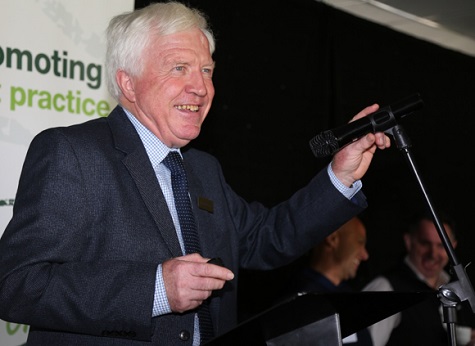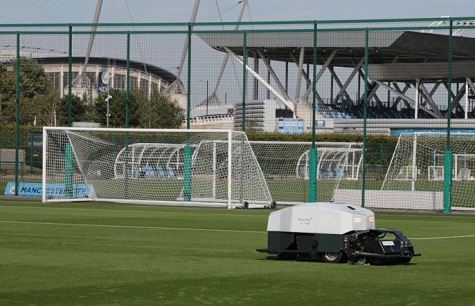
The term sustainability is now widely used and certainly in the amenity and turf sector. At SALTEX in November, virtually every stand was seeking to demonstrate how its products or practices were sustainable.
But what exactly does the term mean, as it seems to be applied in many different ways?
I always believe in starting with a dictionary definition and my version says ‘Sustainability is a societal goal that broadly aims for humans to safely co-exist on planet earth’. Well this gets us started, but it is clear that we need to get a more complete understanding, certainly if we are to apply correctly in our own lives and businesses.
Let us take for example a typical UK golf club. The first aim of that club is to be an economically viable business with financial margins sufficient for re-investment and future development. Without this, it is not sustainable and so economic viability is an essential element in sustainability. A further aim of the club is to, wherever possible, protect the environment and seek to ensure that operations undertaken have as little as possible impact upon its surroundings. This it can do through such things as re-cycling practices, looking to reduce carbon emissions from machinery used and other activities and, in managing the surrounds to the golf course, considering how it might encourage biodiversity and insect life. So, in addition to economics, a second element in sustainability is the environment and its conservation.

John Moverley
We now have two essential elements of sustainability - but a third remains and that is impact upon society. The golf club needs to deliver a first class product to its visitors and members but also seek to minimise its impact upon those who live close by and ensure its staff are safe, as well of course those who use its facilities. This includes commitment to reducing carbon emissions.
Therefore we can best consider sustainability as having three main parts. These are often referred to as the three pillars -
I recognise that I am in danger of getting too complicated and academic, but I do think that, before we can consider sustainability properly and decide how we can contribute to a sustainable agenda, we need to properly understand what it means. The dangers of not doing so are that we look to do something which may seem to be sustainable in one element but be thoroughly detrimental to the others.
As example, let us consider practices employed for weed, pest and disease management. Some argue for a world free of pesticides as they say that this would be more sustainable - but is that totally true? Maybe some alternative methods of control considered have greater carbon emissions for example or their greater cost might impact upon financial viability. This is not an argument for pesticides per se, indeed minimising and targeting their use is clearly beneficial, it is just that, in seeking to be fully sustainable, we must judge the various methods of control available against all three pillars of sustainability and make fully considered choices. As with all decisions personal or business, they benefit from proper consideration and appraisal before implementation.
This article is an introduction of a series over coming months that will delve more deeply into sustainability within the turf and amenity sector and actions being taken, and to be considered, in delivering the sustainable agenda. We will look at the machinery suppliers and examples of how they are responding to the changes needed. At SALTEX, there was a clear focus on this in the displays with machines seeking to minimise carbon emissions and provide more effective and efficient solutions. Steps being taken can be large or small – one small manufacturer I spoke to quantified savings made by changing light bulbs to lower electricity usage ones and great re-cycling of materials.
We will also look at how turf and amenity facilities owners, managers and staff are responding to the challenge and doing their bit to the sustainable agenda and of course considering what more could be done. We will look at distributors providing the sector with products and their innovations and changes. We will also consider how sustainability is being considered in research and examine recent findings and their implications. In the area of weed, pest and disease management, there have been recent well researched and implemented trials which may change all our minds on approaches to be implemented.

Robotic Rovi-mo mower being trailed at Manchester City FC
Of course, in any discussion on sustainability we must look at the politics and government policy. As said earlier, I personally do get concerned about some of the pronouncements made by politicians in terms of sustainability and wonder about their understanding of its full meaning but nevertheless we need to understand policy direction on the topic. The UK government in July 2021 produced a revised document headed ‘Implementing the Sustainable Development Goals’. These goals are wide ranging and challenging to say the least. They certainly widen the consideration and definition of sustainability greatly. In a future article we will look in more detail at government policies and their impact upon our sector, however here are the key UK goals set out in the document.
So whilst we might find it relatively easy to say that we seek to be sustainable, it is clear that actually doing it and deciding what to do is far from easy. On a global scale the need to address sustainable issues, strive for zero carbon and to protect our planet and its biodiversity are easy to sign up to but very difficult to attain. Whatever we do as a nation, individual or a business requires sensitive balancing of considerations. Certainly organisations in the turf and amenity sector must keep focus on those three pillars of sustainability – economic, environmental and social. They can play their part in delivering sustainable solutions by their actions small or large. By the conclusion of these series of articles, it is hoped that readers will be able to better plot their way to both contribute to sustainability goals and maintain and grow their organisation’s activities.
One thing for certain is that the agenda of sustainability is not going away and we can all play our part in its delivery. As Sir David Attenborough recently said ‘It is surely our responsibility to do everything within our power to create a planet that provides a secure home, not just for us but for all life on earth.’